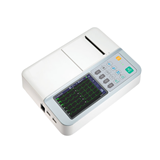By Elhuyar Fundazioa
One of the most recent novelties in ecographic studies has been the application of a fourth dimension, i.e. movement added to three-dimensional reconstruction. According to Dr. Alcázar, “the development of the STIC system, carrying out the spatio-temporal correlation of images, adds movement to 3D ecography. In this way, apart from obtaining exclusively anatomic information, structure from a functional perspective is evaluated”.
Foetal cardiopathy
One of the great advances of this technique is its application to the foetal heart. The STIC system enables a 3D reconstruction of the foetal heart in real time and with movement. This procedure changes the approach to prenatal diagnosis of congenital cardiopathy. It is one of the most common congenital anomalies of the foetus, although to date it has been difficult to detect in pregnancy. The foetal heart is a very small organ that moves very fast (120 beats a minute) and thus, its anatomical study is complicated.
The spectrum of foetal cardiopathies is very wide, from asymptomatic lesions to malformations incompatible with life, needing specialised training. In this sense, knowledge of a foetal cardiopathy can change procedures during childbirth, such as attending a reference centre that guarantees immediate specialised attention. STIC provides important information that can increase the accuracy of the prenatal diagnosis of these pathologies. Apart from facilitating the detection of more lesions, this system enables a refining of the diagnosis and provides guidelines for early treatment.
Another application for the system being studied involves foetal movements. The Department of Gynaecology is working in conjunction with that of Neuropediatrics to establish movement patterns for foetuses of between 24 and 34 weeks. When a child of this gestational age is born and their movements studied, normally parameters for children of 40 weeks are applied; nevertheless, their neurological maturity is not the same and, thus, there exist doubts as to whether the patterns used are the correct ones.
Four dimensions’ technology enables the study of the foetus while it is within the maternal uterus and the visualisation of the movements of the limbs, facial gestures, and so on. This data enables the establishment of patterns more adjusted to their intrauterine neurological development for their subsequent postnatal examination.


